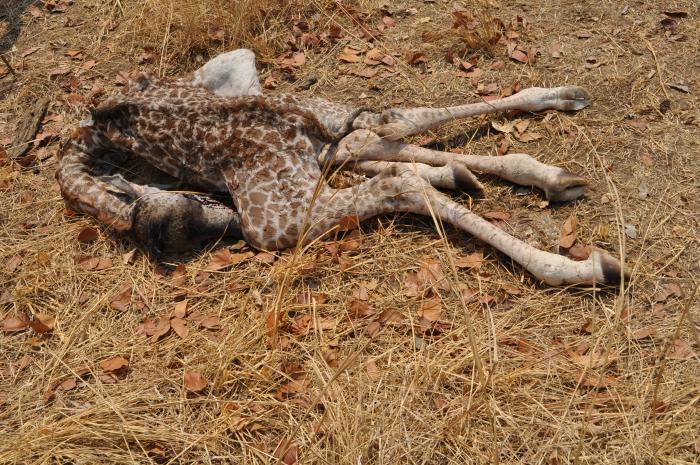
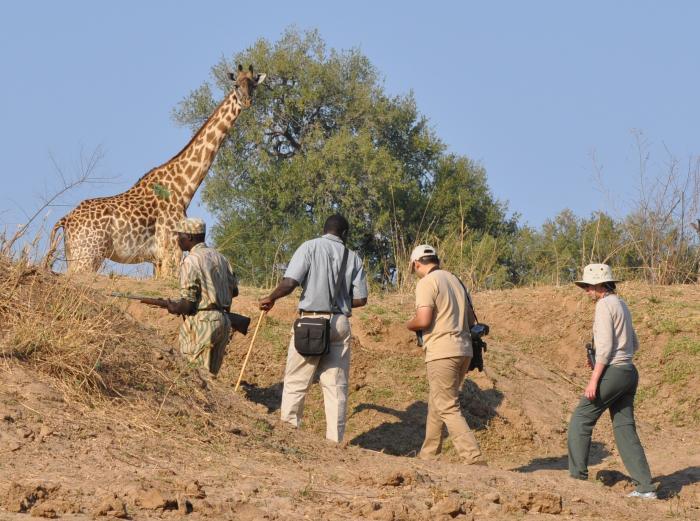
When I was hired to head the San Diego Zoo’s Center for Reproduction of Endangered Species (CRES) Division of Behavior about 20 years ago, my initial research focused on koalas, African wild dogs and giraffes. Many were skeptical about the latter: why study a species that was not endangered? Thankfully, the director of CRES at the time thought differently. His program meshed conservation science with evolutionary biology, regardless of any official IUCN Red List endangered status. He figured that we shouldn’t wait until a species was in danger of extinction before finding out more about what makes it tick.
My team launched a study on how hormones influence the behavior of the giraffes at the Wild Animal Park (now called Safari Park). One of our first significant findings was that giraffe have friends — they do not simply hang around in “loose associations,” as was claimed in the literature. Our findings were highlighted in DISCOVER magazine as one of the “Top 100” scientific stories of 2002. However, there were those who doubted our findings because the giraffes lived in a confined environment, even though their enclosure was a 90-acre, outdoor, multi-species area. I decided to consult with someone who had been watching giraffes in the wild since the late 1960s: Phil Berry. Phil had been a park ranger in Northern Rhodesia (now Zambia), a leader of rhino anti-poaching patrols, a safari guide and a bushcamp owner. And he always took meticulous notes on his observations of animal behavior and ecology, especially on giraffes.
Phil and I met at Kuyenda Bushcamp in South Luangwa National Park in 2004. When I asked him about friendship among giraffes, Phil brought out a copy of a ten-year-old article he had written for BBC Wildlife called “Friends in High Places.” It turns out that giraffes in the wild have friends, too! Phil and I have worked together ever since, converting his field notes into spreadsheets for statistical analysis. We have also published about a dozen papers on giraffe behavior and ecology in the wild, including one of the first publications to reveal that giraffes live in a fission/fusion society (societies with dynamic populations of individuals that gather and separate), with herds often composed of relatives and childhood friends.
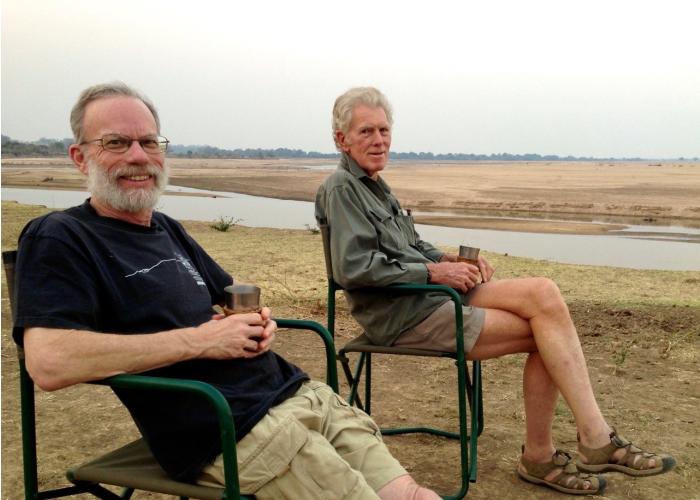
As I became more involved in studying giraffes, I also became more aware of the growing concern among ecologists and biologists about population trends for giraffes in Africa. Back in 2010, the IUCN Red List categorized them as “Least Concern,” but growing evidence showed that they were not as commonplace as thought. In 2011, the community of giraffe researchers held a meeting called Indaba I, from an African term for a community conference, in Etosha National Park in Namibia. There, we exchanged information about giraffe ecology, behavior, population change, taxonomy (exploring how many species of giraffes there are and what distinguishes them from one another) and conservation/captive management.
Two years later, Indaba II convened near Nairobi National Park in Kenya. There, we made two crucial decisions about giraffe conservation based upon the dreary results about their numbers that were emerging. Our first decision was on the taxonomy, or classification, of giraffes. Scientists disagree on the definition of a “species.” Charles Darwin didn’t even include the word in the glossary of The Origin of Species. Giraffes have been classified into one, two, four, at least six, and eight species. Further complicating the situation is that the IUCN, ESA (Endangered Species Act) and CITES (Convention on the International Trade of Endangered Species of Wild Fauna and Flora) all define “species” differently. We decided to adopt the consensus view that giraffes are one species, Giraffa camelopardalis, with nine subspecies.
Our second decision was to split up into nine groups, each devoted to collecting and compiling the best available information about the past and present numbers of the nine subspecies. The IUCN Red List is based not only on population size, but also on the distribution of individuals and trends over time, so we needed a starting point for all nine subspecies. Because of my work in Zambia on the Thornicroft’s giraffe, Giraffa camelopardalis thornicrofti, I was tasked with heading up that subspecies group. These giraffes can only be found in the Luangwa Valley in Zambia. From Kenya, I flew to Zambia, met up with Phil, and recruited him to help estimate how many Thornicroft’s giraffes there were in the past and calculate how many were present in 2013.
We analyzed Phil’s detailed records of giraffes. Covering the period from 1973 to 2003, we divided the number of individual giraffes that he spotted by the distance that was covered during his ranger patrols, walking safaris and game drives to estimate the density of Thornicroft’s giraffes. Then, using that number, combined with the approximate distribution of giraffes, we estimated the population size over time.
To determine how many giraffes were currently present, we needed a more concerted survey. Along with a team of expert safari guides, we drove along the roads in South Luangwa National Park, stopping to count giraffes every time we encountered them. The density of giraffes, and the final estimated number, was nearly identical to what we had calculated based upon the earlier records. About 500 to 600 Thornicroft’s giraffes now lived on the planet, and their numbers had been stable since 1973. Their limited range, combined with their small population, qualified them to be listed as “Vulnerable” by the IUCN Red List. We published our findings in 2016, and Thornicroft’s giraffes were placed on the IUCN Red List as a “Vulnerable” subspecies in 2018.
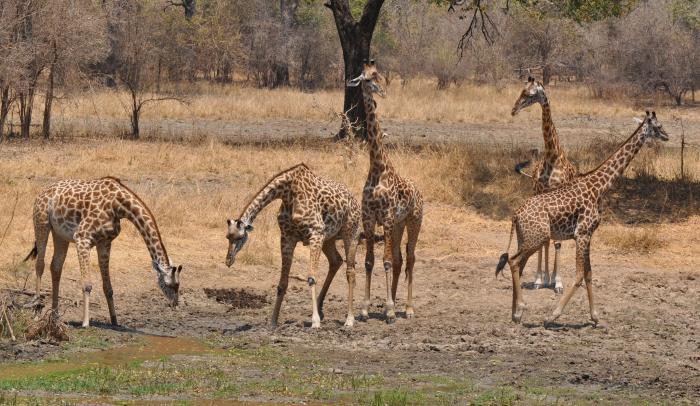
Indaba III was held in 2015, adjacent to Kruger National Park. There, we compiled all the information collected since Indaba II, which revealed that giraffes had sustained about a 40 percent decrease in population size within three giraffe generations, about 30 years. We drafted a Red List Assessment for the IUCN that recommended a “Vulnerable” listing for the one species of giraffe and all nine subspecies. In December 2016, the IUCN officially announced that giraffes were “Vulnerable” to extinction. In 2018, seven of the nine subspecies were placed on the IUCN Red List with classifications ranging from “Least Concern” to “Critically Endangered.”
The four major threats to giraffes are habitat loss, civil unrest, illegal hunting and ecological changes, which have been expertly described by Rina Herzl, so rather than repeat her work here, I’d like to share how conservationists are striving to save giraffes.
Numerous biologists and ecologists, including me, were interviewed about giraffe conservation for a documentary film called “Walking with Giraffes” (also known as “Last of the Longnecks”) that was broadcast on NatGeo Wild in 2017. The film’s director, Ashley Scott Davison, became extremely passionate about giraffe conservation in the course of producing the film and wanted to become more of an activist. Along with Tiffany Soechting, we established a 501(c)(3) nonprofit organization called Save The Giraffes to raise funds to distribute to giraffe conservation science and education programs. The documentary received such positive reviews that Ashley set out to make a sequel.
The follow-up documentary, not yet released, is called “Catching Giants.” In October 2017, Dr. Francois Deacon of the University of the Free State in South Africa recruited an international team of scientific experts to collect as much useful biological and ecological information as possible about a population of South African giraffes. Most of us had never met before, but the teamwork and camaraderie we developed was better than anything I had witnessed in decades of studying animals. The heart of the project required the immobilization of 20 giraffes, a huge undertaking.
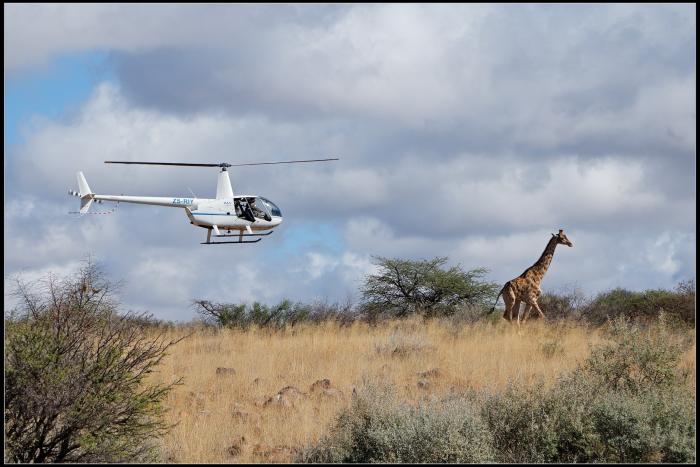
Immobilizing giraffes in the wild presents a number of challenges. It involves a helicopter pilot maneuvering to isolate a subject for darting by a veterinarian with a tranquilizer while simultaneously keeping in radio contact with a ground crew so that their vehicles can be close to the animal when it begins to show signs that the drugs are working. At that point, the vehicles rush over to the giraffe, and the lead chasers use a special rope that looks like a long, flat fire hose to help trip the giraffe. The rest of the research team jumps out of their trucks carrying supplies and equipment, and runs toward the giraffe. The goal is to have them back on their feet within 15 minutes.
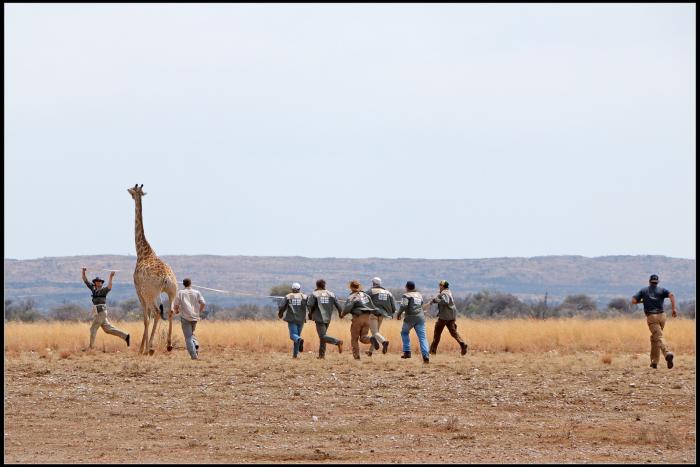
As the Research Coordinator, I ran around with a check sheet on a clipboard to make sure that all the vital biological samples and measurements were collected and labeled correctly. We recorded hoof and body measurements, skin temperature, and horn (ossicone) and tooth size. We took photos of their teeth and hooves. We put GPS units on their heads. We plucked parasites off their skin for later identification and collected fecal samples for analysis. We collected blood samples to determine genetics and hormone concentrations. We clipped hooves to evaluate nutritional status.
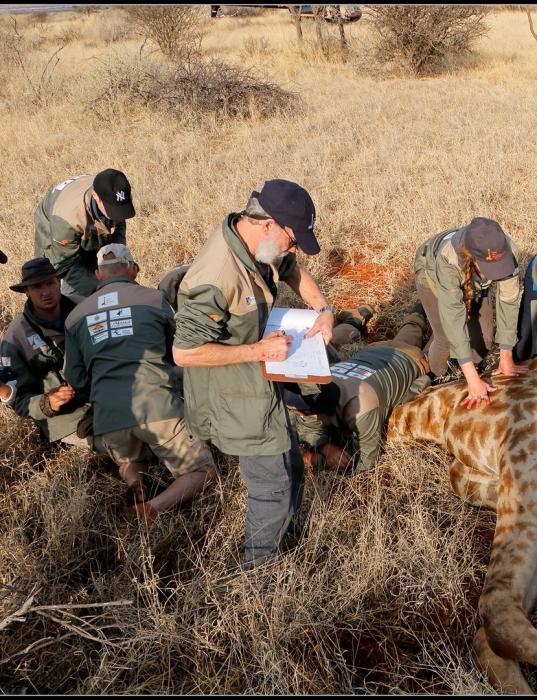
Francois is an expert in conservation ecology and a pioneer in getting GPS units on giraffes. He has supervised the immobilization of over 60 giraffes without injuring a single one. The GPS devices regularly collect information about the location of the animals, but plotting points on a map is useless without understanding why the animals are traveling to each location. Francois and his students also obtain daily weather reports, collect soil samples, map the vegetation and record the life cycles of plants. Documenting the reasons for giraffe movement patterns provides better input for mapping giraffe habitats as an aid to save the species.
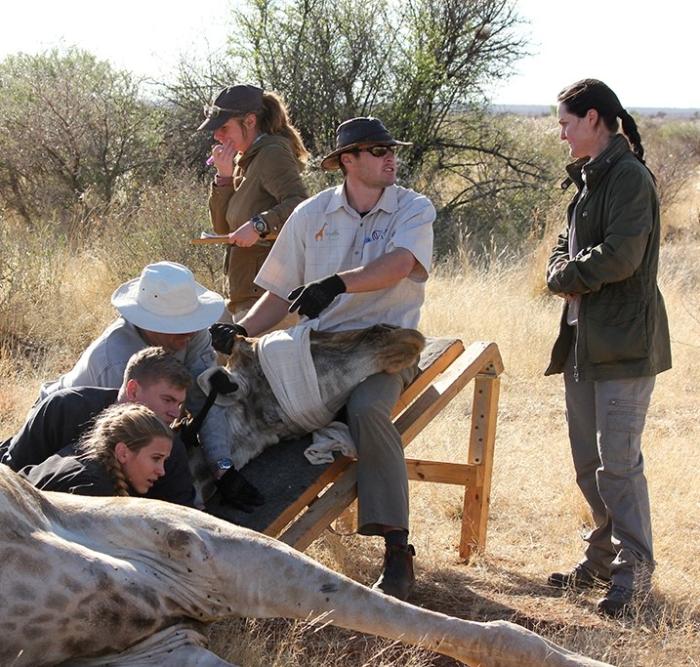
A fundamental challenge in giraffe conservation is maintaining genetic diversity in captivity and in large reserves in Africa. So we decided to try to collect semen from a wild bull. As nobody had ever successfully done so, we thought we should practice on a non-endangered subspecies of giraffe. If our technique worked, we could use it to collect semen from endangered subspecies, such as the Masai giraffe, and then send the semen to zoos housing that subspecies, which would be more efficient and less costly than transporting animals from zoo to zoo. Plus, semen from wild giraffes would increase the genetic diversity of the captive population.
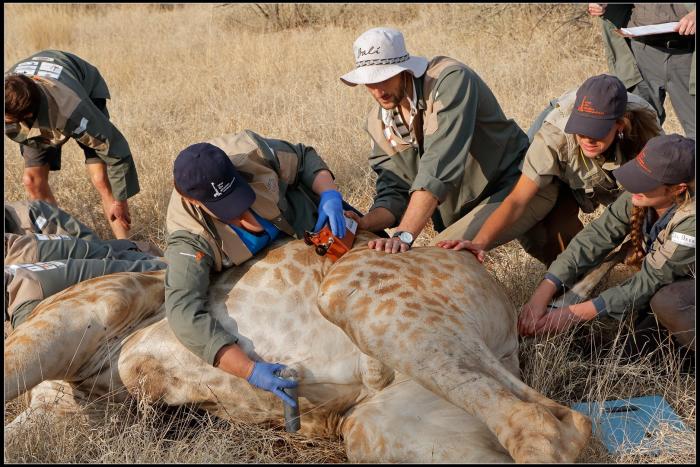
Artificial insemination could be a useful conservation tool for giraffes. Led by our specialist in semen collection, Ilse Luther-Benoir, our team used a method that involves gently inserting a probe into the rectum, positioning it properly and then stimulating the male with a low voltage electric charge, a procedure safely and successfully used on a variety of endangered species (including panda bears and elephants), that causes no harm to the animals. This triggers not only the release of semen, but also involuntary kicking of the legs. If hit by a hoof, humans can sustain severe injuries, so those of us holding the ropes brace ourselves as best as possible before the probe is activated. The pilot project was a success! We got semen from the bulls. “Catching Giants” brings viewers into the controlled chaos of the capture, including collecting semen, obtaining milk from lactating females, placing GPS units on the giraffes and stunning views from the helicopter.
The Wild Nature Institute in Tanzania uses a different tactic to try to figure out why giraffes roam where they do and the best methods for conservation of the Masai giraffe. Unlike Francois’s emphasis on what individual giraffes are doing in the wild, their focus is on population changes, such as births, deaths, disease and migration of giraffes. In a partnership with Microsoft engineers, they developed a system that uses pattern recognition software to identify individual giraffes. Because every giraffe has a unique coat pattern, they can determine how many giraffes reside in a region, as well as calculate birth rates and deaths/disappearances of individuals. Their study area is massive, encompassing the Tarangire Ecosystem in northern Tanzania and stretching west to the Serengeti Ecosystem. To date, they have a database of over 3,000 Masai giraffes, or about 10 percent of the resident population in Africa. They also have an incredible conservation education program for local school children and villages, where the leaders of tomorrow learn about the sustainable use of resources and biodiversity conservation.
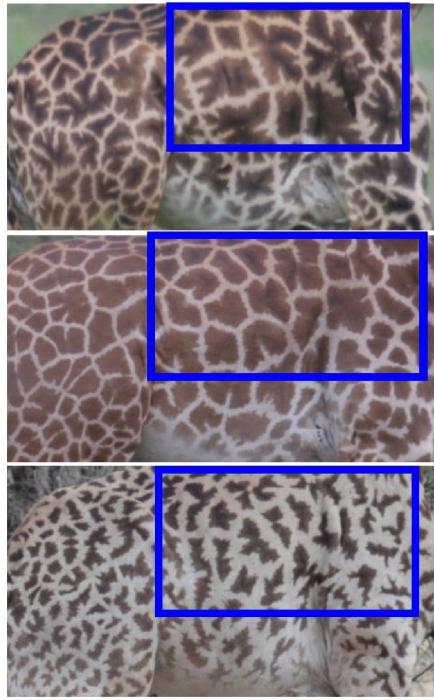
Giraffes are an endangered species. Their continued presence in Africa requires supporting conservation science and education projects that increase our understanding of how giraffes churn food into offspring, because resource use and reproductive rates are the keys to population growth or decline. Documenting how foraging and reproductive strategies are connected can greatly assist those making conservation management plans with local communities.
In 1908, big game hunter, explorer and conservationist Frederick Courtney Selous wrote: “Throughout the greater part of this immense range, these magnificent, strangely beautiful creatures will, in my opinion, continue to live and thrive for centuries to come”. Surely, it would be tragic if these “magnificent, strangely beautiful creatures” were erased from the planet because of humans in little more than one century after he wrote those words.
